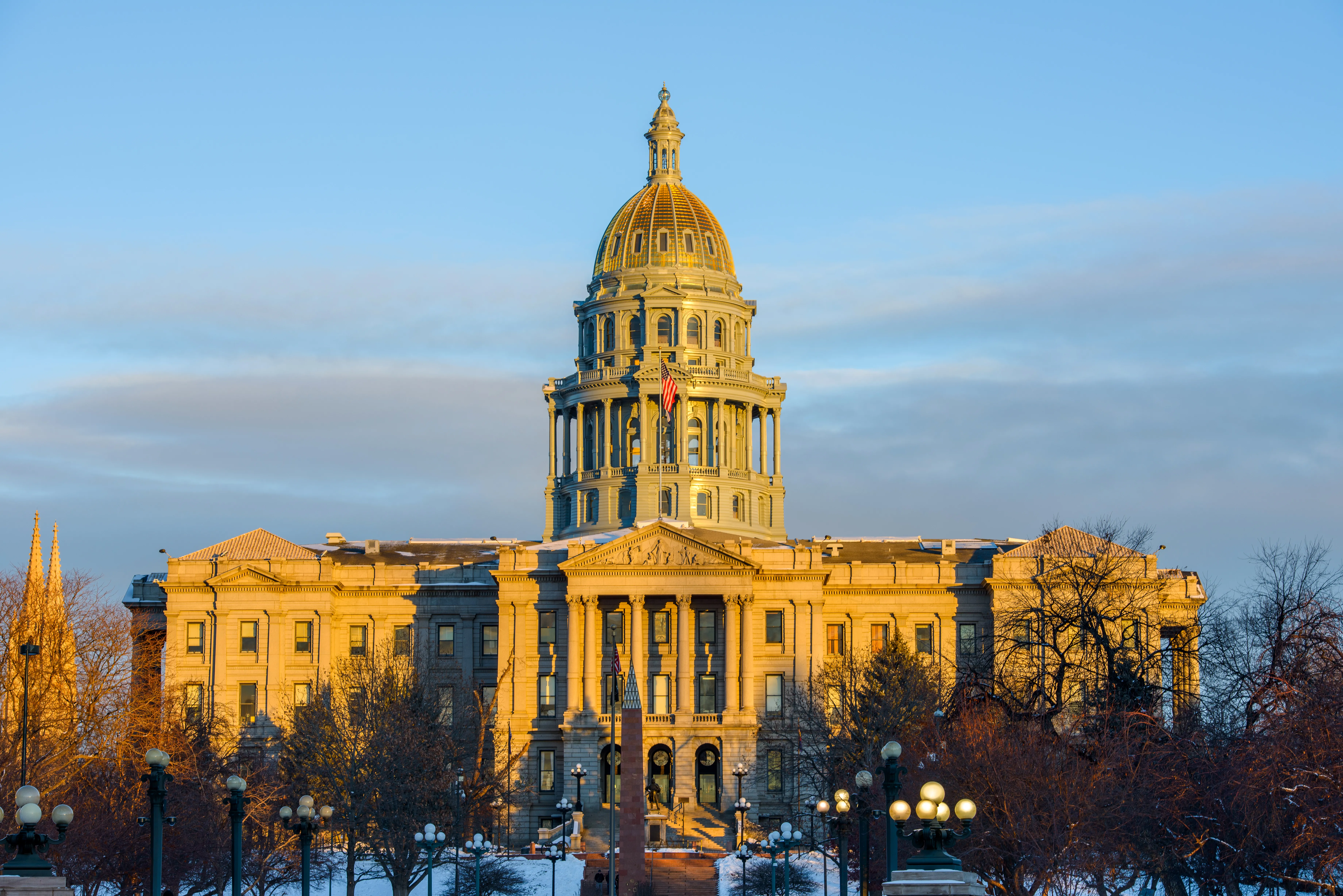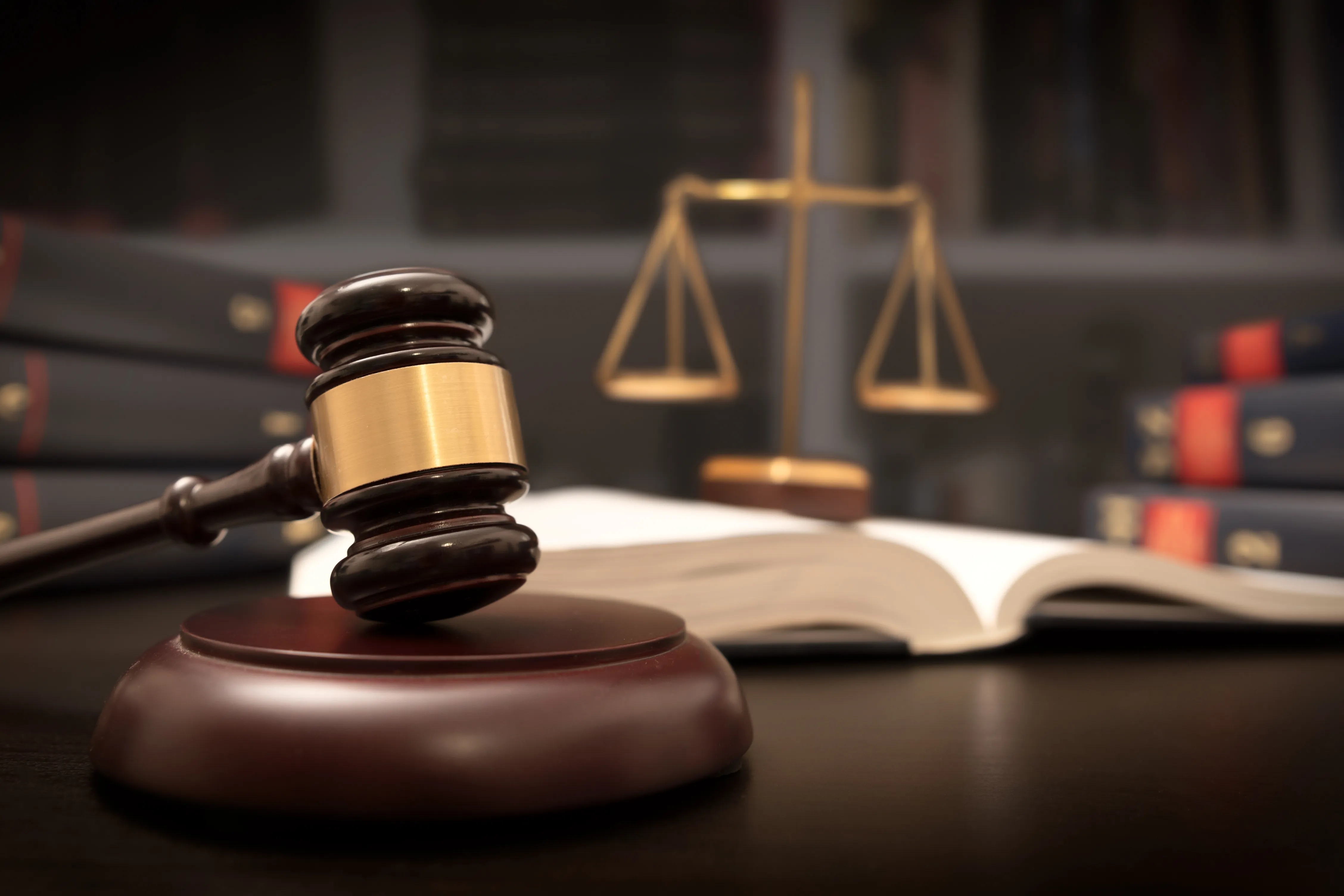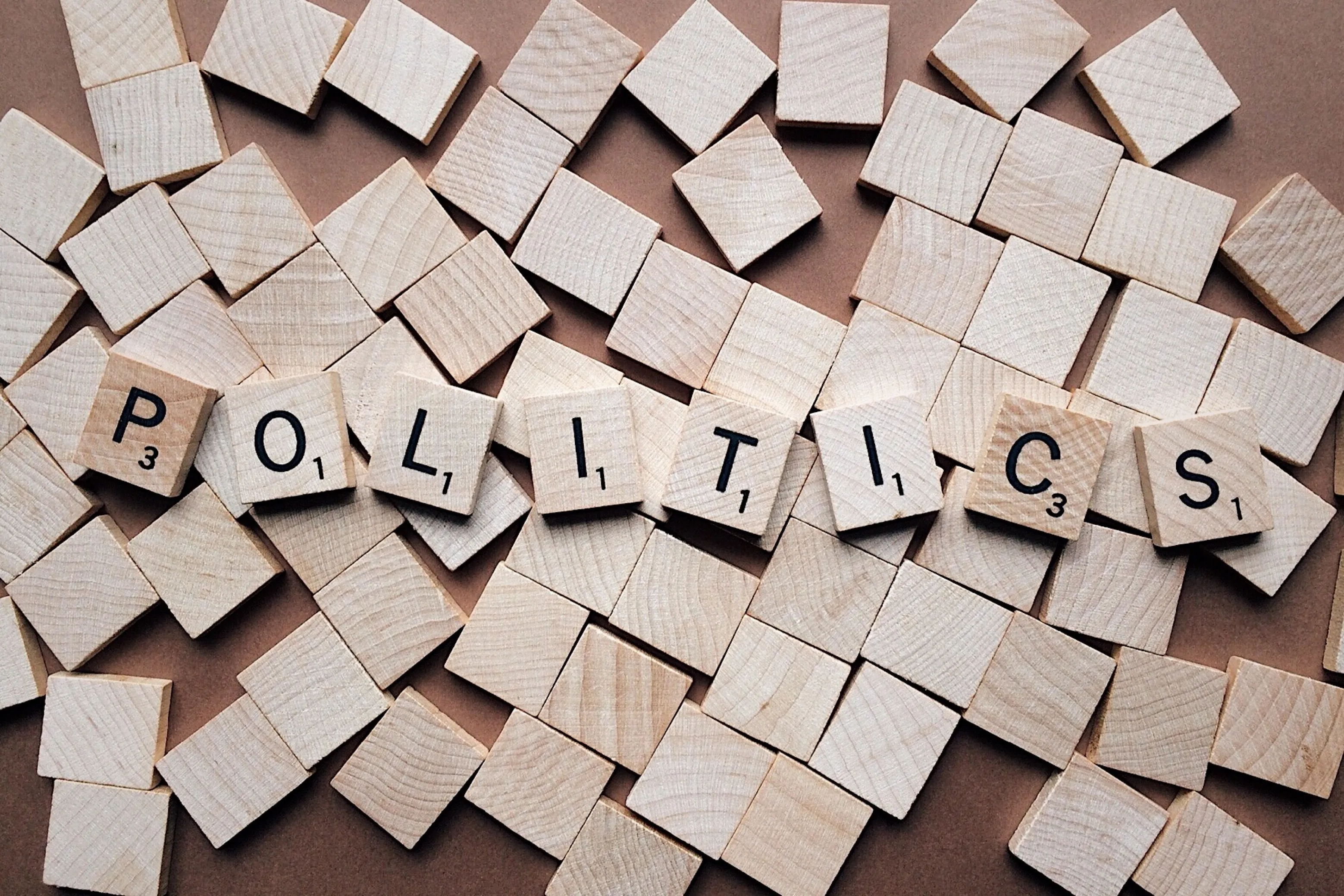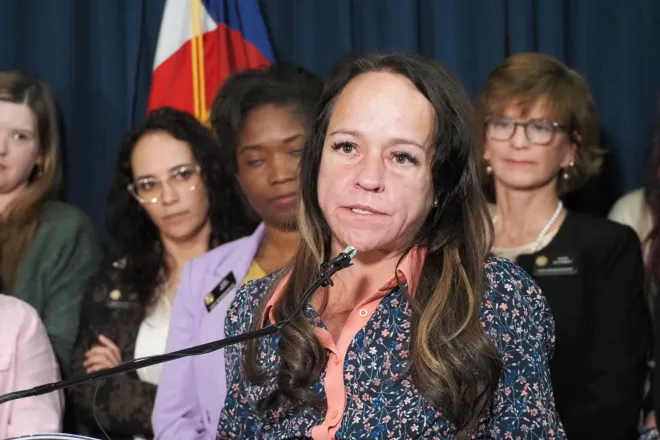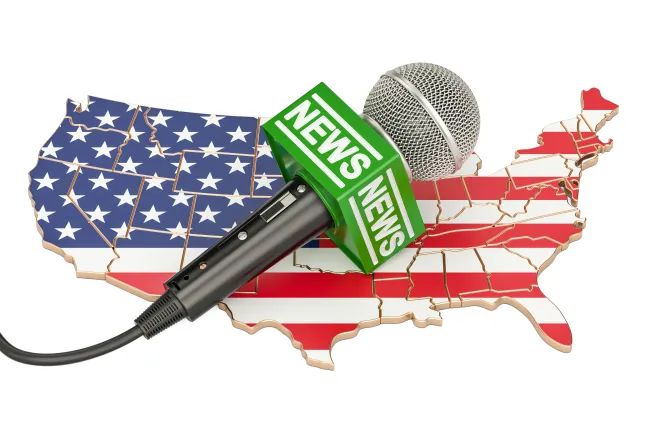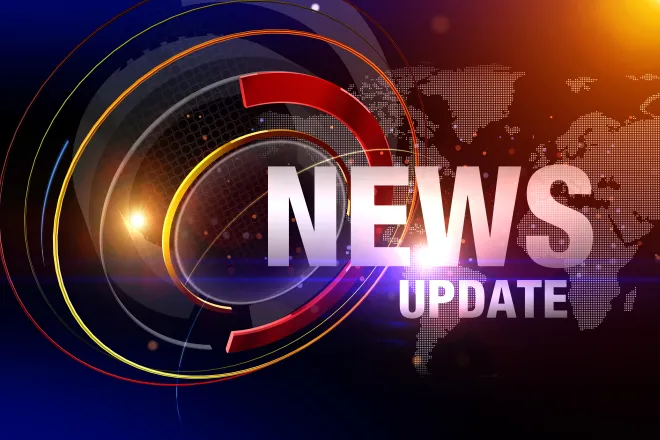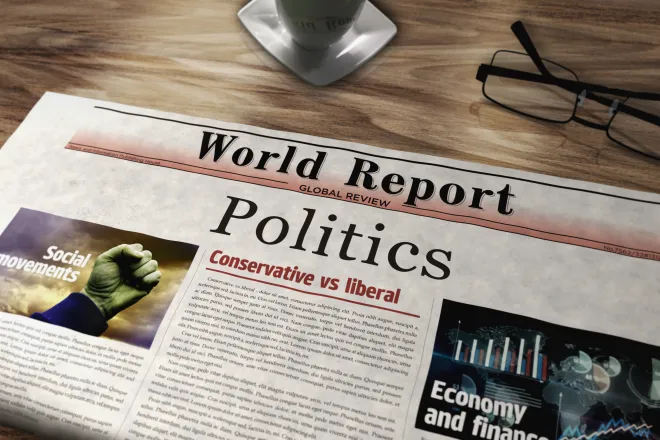
Judge orders Utah Legislature to draw new congressional maps
A judge has ruled the Utah Legislature overstepped when it repealed and replaced a 2018 ballot initiative creating an independent redistricting commission. Now, she’s ordering lawmakers to draw new congressional maps in time for the 2026 election.
Third District Court Judge Dianna Gibson handed down the ruling Monday evening — a major development in a complex, yearslong court case that has major implications for the future of Utah’s federal political landscape.
“Plaintiffs have proven, as a matter of law, that the Legislature unconstitutionally repealed Proposition 4, and enacted SB 200, in violation of the people’s fundamental right to reform redistricting in Utah and to prohibit partisan gerrymandering,” Gibson wrote in the ruling.
The judge also enjoined the state’s 2021 congressional map and directed the Legislature to “design and enact a remedial congressional redistricting map in conformity” with the 2018 ballot initiative known as Better Boundaries and its mandatory independent requirements.
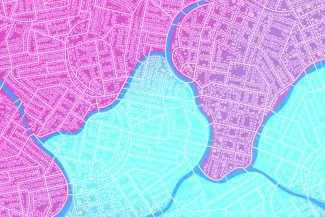
© Vadym Ivanchenko - iStock-1663163950
The ruling comes during a time when debate over redistricting is at the forefront on the national stage — and it now propels Utah into the fray. While redistricting efforts in Texas, California and other states are playing out mid-decade — fueled by President Donald Trump’s aim to bolster the U.S. House’s slim GOP majority in the 2026 midterm elections — Utah’s effort for an independent and nonpartisan process is court ordered.
The ruling — if allowed to stand — could force the Republican-controlled Utah Legislature to redraw maps for its congressional boundaries that it last set in 2021. Before those maps were adopted, one of Utah’s four U.S. House seats was competitive for Democrats. Today, Republicans consistently dominate all four.
However, that all depends on the final outcome of the case — which isn’t over. Attorneys for the Utah Legislature have indicated that if Gibson didn’t rule in their favor, they’d appeal to the Utah Supreme Court and possibly the U.S. Supreme Court.
Utah’s top Republican legislative leaders left the door open Monday to additional legal or legislative maneuvering.
“While disappointed by the court’s decision, we remain committed to protecting the voices of Utahns and upholding the Legislature’s state and federal constitutional authority to draw congressional districts,” House Speaker Mike Schultz, R-Hooper, and Senate President Stuart Adams, R-Layton, said in a joint statement. “We will carefully review the ruling and consider our next steps.”
Utah Gov. Spencer Cox issued a short statement saying he disagreed with an earlier Utah Supreme Court ruling that sent the redistricting case back to Gibson’s court room last July, and that she erred when she initially dismissed the claim that the Legislature overstepped when it repealed and replaced Proposition 4.
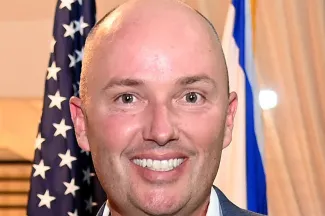
Utah Governor Spencer Cox
“Today’s decision is not a surprise after the Supreme Court’s ruling last summer,” Cox said. “While I respect the role of the courts in our system, I continue to disagree with that decision.”
Gibson’s ruling sides with the plaintiffs — which include the groups League of Women Voters of Utah, Mormon Women for Ethical Government and the Campaign Legal Center — in an anti-gerrymandering lawsuit that’s stretched on for more than two years over an issue that dates back even further.
Now, with Gibson’s ruling, the court has reinstated the language of Proposition 4, the 2018 ballot initiative that requires redistricting maps to comply with a set of specific standards meant to prevent partisan gerrymandering.
To “remedy” the 2021 congressional map that’s now been deemed unconstitutional, Gibson proposed a timeline to govern additional court proceedings between now and Nov. 1, giving the Legislature 30 days to draw a new congressional map “that complies with the mandatory redistricting standards and requirements originally established under Proposition 4.”
“The Legislative Defendants are ordered to make their chosen remedial map available to Plaintiffs and the Court no later than 5:00 p.m. on September 24, 2025 or within 24 hours of enacting the new congressional map, whichever occurs earlier,” the judge wrote.
The judge said plaintiffs and other third parties “may also submit proposed remedial maps” to the court September 24 if the Legislature doesn’t enact a map that complies with Proposition 4 by its deadline or if the plaintiffs “contend that the remedial map fails to abide by and conform” to Proposition 4.
‘Watershed moment’
The lawsuit’s plaintiffs and leaders of Better Boundaries were elated by Monday’s ruling. They chatted excitedly and hugged each other as they gathered outside the Matheson Courthouse in Salt Lake City for a news conference as evening fell.
Elizabeth Rasmussen, executive director of Better Boundaries, called the ruling a “major win, not just for the plaintiffs, but for the voters of Utah and for the future of citizen-led reform in this state.”
“We are thrilled that the court has reaffirmed what we have known all along — that the people have co-equal lawmaking authority with the Legislature. That the Legislature violated the Utah Constitution when they overturned Proposition 4. And that Utahns deserve fair, independent maps they voted for almost seven years ago,” she said.
The plaintiffs’ attorney David Reymann said the ruling was a “watershed moment in Utah for the voices of Utah voters.”

“We have maintained from the start that the Legislature in this state is not king, that their power derives from the people,” Reymann said. “Today, the voice of Utah voters was vindicated by the district court, which held that the Legislature cannot ignore what the Utah voters enact without consequence.”
Reymann said the judge has also set up a process “that will allow us to give to voters what they voted for so many years ago, which is a map that is not stacked in favor of one party.”
Emma Petty Addams, co-executive director of Mormon Women for Ethical Government and one of the plaintiffs, called the ruling “a significant and meaningful victory … for every Utahn who believes that government should serve the people.”
“The court today reaffirmed that citizens have both the right and the responsibility to reform unjust systems. That this right cannot be discarded by elected officials for their own political convenience,” Addams said.
To Utah’s state leaders, Addams issued a call to work together rather than continue to fight.
“Let’s work together to create a more representative government. The people have spoken. The courts have spoken. Now is the time to move forward with cooperation and respect for the rule of law,” she said.
Katharine Biele, president of the League of Women Voters of Utah, said the league “couldn’t be happier” with the ruling.
“We believe in representative government. We hope it sends a message to the Legislature that we want to work with them,” Biele said. “We want to work hand in hand with them, because representatives should represent their voters. It is not the other way around. That’s what we have been fighting for since 2018.”
Ryan Bell, a member of Better Boundaries’ board of directors, said “we are ecstatic” — especially with one of the lines in the ruling that said “Proposition 4 is the law in Utah.”
“I also loved what the court wrote about the shared power,” Bell said. “The court stated that … redistricting is an act of legislating. And legislating is equally shared between the Legislature and the people. This is a wonderful innovation of Democratic representative government, and I am grateful to live in a land where that is respected and will be enforced.”
Bell said the court’s decision shows “the Constitution works. Checks and balances work. Our judicial system works. And our time-tested system of representative democratic government is going to remain strong after today.”
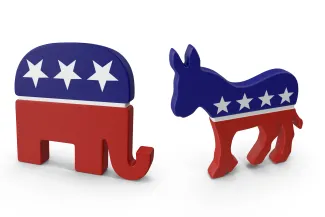
© fitimi - iStock-528483210
“We respect the power that the Legislature has. We expect the Legislature to respect the power that the people have,” Bell said.
Giving a nod to the redistricting debate now happening across the nation, Bell said “this is something larger than Utah.”
“What this means is that we will have more free and fair elections in Utah, and we will send to our Congress people more accountable and less extreme,” Bell said. “Utah will be responsible for having a less polarized Congress. I hope that Utah will become a beacon to many other states that pass similar laws, fight gerrymandering, and have fair election maps so we can have more balanced and representative and accountable Congress, just as the founders envisioned so long ago.”
Utah Democrats also celebrated the ruling.
“Utah is now on the front lines of this national struggle, where the integrity of our democracy and the principle of fair representation are under direct attack,” Utah House Democrats said in a prepared statement. “This decision is a powerful affirmation that voters of all backgrounds deserve a voice in the democratic process.”
Utah Senate Democrats issued a statement calling on their Republican counterparts to “embrace this ruling and work together to create fair congressional maps that reflect the will of the people.”
Progressive political consultants also lauded the ruling as crucial to making the Republican-controlled state of Utah more representative and competitive for Democrats.
“For years, the Utah Legislature has governed through manipulation, not representation,” said Jackie Morgan, senior partner at Elevate Strategies, a Utah-based political consulting firm. “That era ends today. Fair maps will restore real competition to Utah politics and national observers should take note: Utah is no longer off the map.”
Morgan added “this isn’t just a courtroom victory, it’s a turning point.
“Utah is one of the youngest, fastest-growing, and most politically dynamic states in the country,” she said. “With these new maps, we’re going to see emerging leaders, energized voters, and, for the first time in a generation, a real contest for power. This is the foothold that could shift control of Congress.”
How did we get here?
In 2018, the anti-gerrymandering group Better Boundaries successfully pursued a ballot initiative known as Proposition 4 to create an independent redistricting commission that would have drawn proposed boundaries for Utah’s congressional, legislative, and state school board districts based on a set of standards that the Legislature would be required to consider. Voters narrowly approved that initiative, with 50.3% of the vote.
However, in 2020, the Utah Legislature repealed and replaced Proposition 4 with SB200, a law that turned the independent redistricting commission into an advisory body that lawmakers could ultimately ignore. The next year, lawmakers did just that — ignored the independently-drawn maps and adopted their own, despite protests that the maps cracked Democratic strongholds in an otherwise staunchly conservative state.
In 2022, the nonpartisan groups League of Women Voters of Utah and Mormon Women for Ethical Government sued, alleging the Utah Legislature violated Utahns’ constitutional right to alter and reform their government when lawmakers repealed and replaced Proposition 4. They also alleged the congressional map was an unconstitutional partisan gerrymander that favored Republicans.

© legacyimagesphotography - iStock-160735792
The case wound its way to the Utah Supreme Court, which last year on July 11 issued a groundbreaking ruling that prompted celebration from the plaintiffs and dismay from Utah’s Republican legislative leaders.
That unanimous opinion reversed a previous decision issued by Gibson dismissing the claim that the Legislature overstepped when it repealed and replaced Prop 4. The Utah Supreme Court’s ruling made clear that lawmakers do not have unfettered power to repeal or change all types of ballot initiatives, and that if they make changes that “impair” a “government reform” initiative, they must show it’s “narrowly tailored to advance a compelling government interest.”
The Supreme Court’s ruling sent the case back to Gibson’s courtroom to determine whether the Legislature met that “compelling government interest” standard to repeal and replace Prop 4. If not, the court would also need to decide a process to fix it. In January, Gibson heard more than three hours of oral arguments on the issue.
During that hearing, Tyler Green, an attorney representing the Utah Legislature, argued the Legislature repealed Proposition 4 with SB200 — the law that turned the independent redistricting commission into an advisory body — to address concerns that enacting Proposition 4 would have violated the Utah Constitution, which states the Legislature “shall divide the state into congressional, legislative and other districts.”
Proposition 4’s independent commission created a constitutional conundrum, Green argued, because it would insert itself into the legislative process and “force” the Utah Legislature to act based on a new set of rules that strays from the Legislature’s regular legislative process.
“That’s the crux of the constitutional problem,” he argued.
Aseem Mulji, an attorney for the Campaign Legal Center, which is also representing the plaintiffs in the case, argued there is “no dispute” that SB200 “impaired” Proposition 4. He also argued legislative attorneys have failed to show that their replacement of the ballot initiative was narrowly tailored enough to survive a constitutional challenge.
Mulji also argued that just because lawmakers disagreed with the criteria required in Proposition 4, that doesn’t justify repealing and replacing the voter-approved law that harnessed the people’s constitutional right to alter and reform their government.
“If they don’t like it, that’s not a good enough reason to impair a reform enacted by the people,” he said.
The plaintiffs asked the judge to stop enforcement of SB200 and invalidate Utah’s current congressional maps ahead of the 2026 primary and general elections. They hoped that the court would in effect revive Proposition 4 and simultaneously invalidate the current congressional map while also allowing a process to proceed in 2026 to create a new map.
Plaintiffs had encouraged the judge to make a decision sooner rather than later because a new congressional map would need to be drawn by November 2025, ahead of the 2026 election.





